QuestionI HAVE A NEW 55G THAT I'M CYCLING NOW. WOULD LIKE TO KNOW WHAT KIND OF TROPICAL FRESHWATER FISH WOULD BE BEST FOR COMMUNITY TANK. I LIKE DISCUS, ANGELFISH, AND SOME OF THE MORE COLORFUL AFRICAN CICHLIDS.
AnswerHi Shirley;
Angels and discus can be compatible, but African Cichlids should be in a tank of their own. If you like them, a species tank with just africans is the way to do it.
Angels and Discus like lots of live plants and plenty of space. They grow to be quite beautiful as they mature, but can get aggressive with one another. You may have to move more aggressive members of the tank to other homes if they bully too much. They are cichlids, after all! A few of the other fish that can live with discus and angels are synodontis cats, cory cats, tetras, loaches, danios, and rasboras. Start with only five or six 2" fish for the cycling period of 6 to 8 weeks. Don't add more until the cycling is complete. Then, add a new one or two every week. This gives the system time to "catch up" to the new population.
A tank needs fish in it to even begin to cycle, so hopefully the fish you have in there will be compatible with the fish you like. Here is my article on new tanks to help you through the process;
**********
New Tank Syndrome or Break-in Period
So you have a new tank and you filled it up, put the filter together, mounted the heater into place and turned on the lights. You have all the plants and decorations where you want them....
You are ready for fish.
But, your filter is not ready for a full tank of fish yet.
The filter is running and moving the water and cleaning out crud, right? Of course!
But a very important part of your filter is the part you can't see. An aquarium filter removes the larger visible stuff, but it also must remove the dissolved fish waste that turns into ammonia in the water. To do this, special bacteria must grow in the filter system and on the particles of gravel in the bottom of your tank. This process occurs even on a limited scale in little fish bowls that have no filter in them.
This is "New-Tank Syndrome" or the "Break-in Period". The entire process takes 6 to 8 weeks to complete because these "nitrifying" bacteria grow quite slowly.
Start off with only two hardy fish for every ten gallons of water and don't add more until the 6 to 8 weeks has gone by. Hard to be patient, but it is worth it to keep your fish alive and healthy. As a matter of fact, the bacteria cannot develop without fish in the tank. You can let that tank sit forever without fish in it, but as soon as the first fish goes in the process begins. Avoid changing the filter pads during break-in. This removes the bacterial colonies that are essential to a balanced aquarium. You can rinse the filter pad out in a container of aquarium water. This will preserve most of the bacteria colonies while still allowing your filter to flow freely. Even using bacteria additives and water conditioners when you first set up the tank will not make a tank cycle by itself. If there are no fish to provide food (fish waste) for the bacteria, the beneficial bacteria cultures will die and you will have to start start the colonies all over again once fish are added to the tank.
Feed your new fish VERY lightly. Any excess food will cause additional waste your system cannot afford to have right now. If you see food floating around or lying on the plants and gravel after five minutes, too much food is going into the tank. Cut back a little each time you feed until it is ALL gone 5 minutes after you feed them.
During this "break-in period" your tank will become cloudy and milky looking. You may have to tolerate this for the entire break-in period but it is only temporary. Changing 25% of the water three times a week until the break-in period is over helps a great deal. Changing water reduces the ammonia and nitrites that rise while the bacteria continues to multiply. If ammonia and/or nitrites become too high, your fish will become stressed and possibly die. Use a good water conditioner when you replace the water and make sure it is the right temperature to avoid shocking your fish.
When the break-in period is over, do regular water changes and vacuum the gravel at the same time. A change of 25% every one to two weeks is a good rule of thumb. It simply needs to be done for healthy fish.
Following these guidelines will help you get your new tank on the right track.
**********
At Your Service;
Chris Robbins

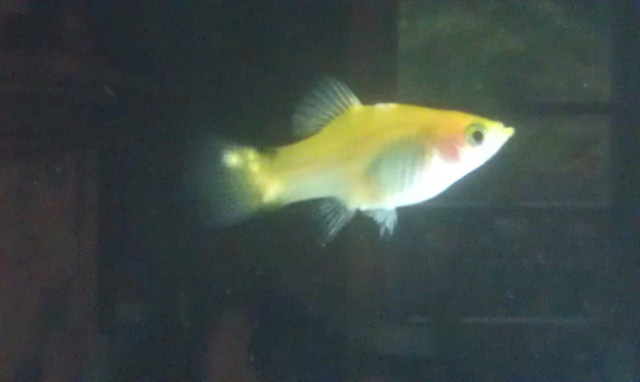 Large white patches
Question
Yellow Platy with spot
Ive had this fem
Large white patches
Question
Yellow Platy with spot
Ive had this fem
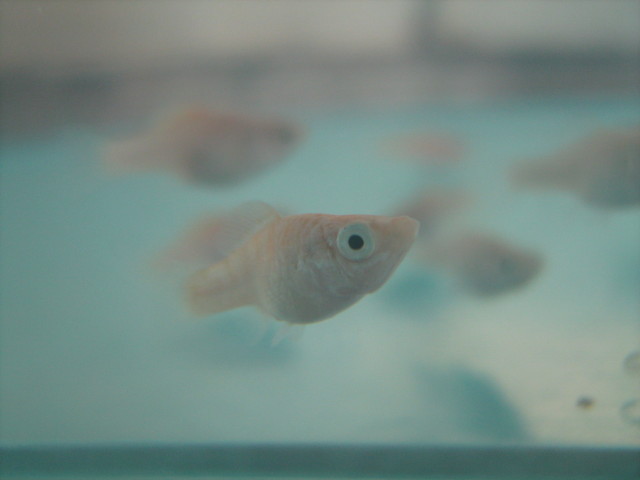 balloon molly fish
Questionmy baby balloon mollys
QUESTION: hi, i a
balloon molly fish
Questionmy baby balloon mollys
QUESTION: hi, i a
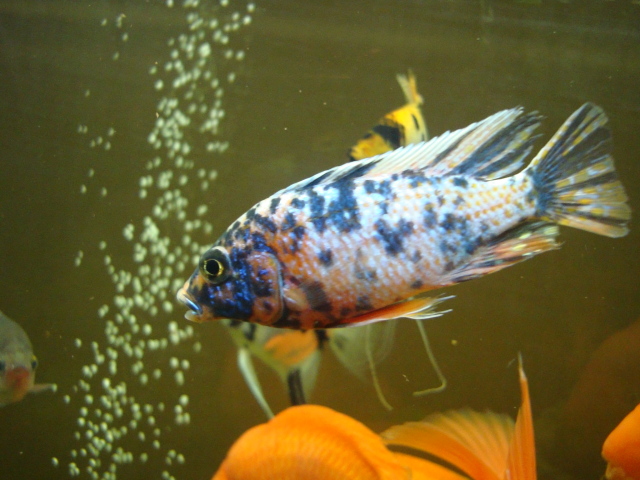 parrots and cichlids
Question
Cichlids
Hi,
Please can you tell which cichlid
parrots and cichlids
Question
Cichlids
Hi,
Please can you tell which cichlid
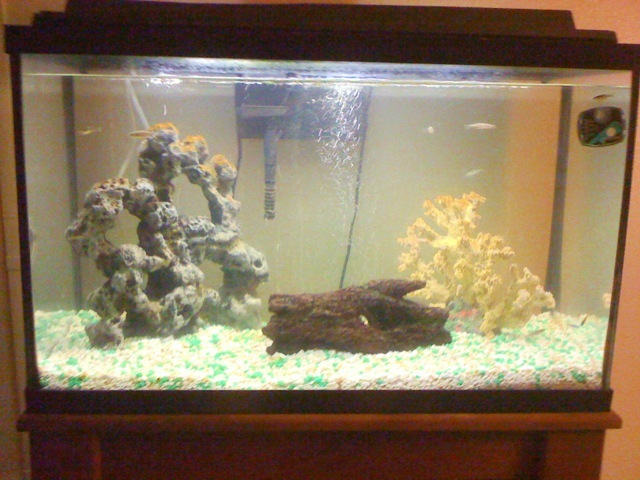 Adding Fish To My Freshwater Tank
Question
My Tank
Hi Jaymie,
My name
Adding Fish To My Freshwater Tank
Question
My Tank
Hi Jaymie,
My name
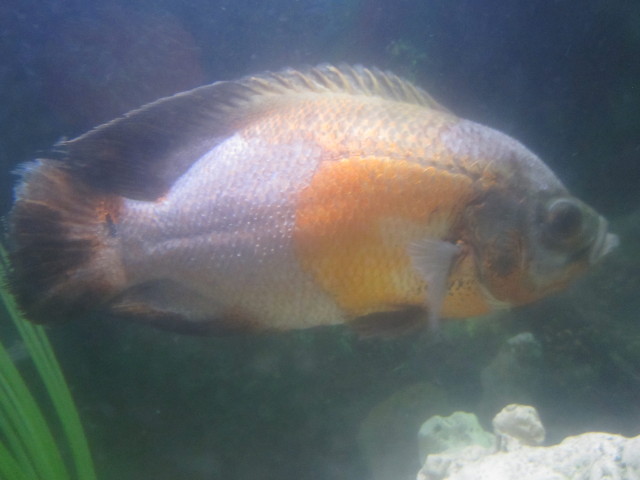 sick tiger oscar
Questionsick tiger oscar
QUESTION: Hi! I have a
sick tiger oscar
Questionsick tiger oscar
QUESTION: Hi! I have a